New York—Jack Hanley Gallery presented Elizabeth Jaeger’s fifth solo exhibition with the gallery. In a new series of black ceramic vessels, large peepholes reveal worlds of miniature scenes placed inside. Resting on handmade powder-coated wire cages, the depicted scenes and figures range in settings and size: a dormitory with neatly arranged beds, a meeting of individuals seated in a circle, someone lying on their stomach reading a book, or a single cat lounging in the safety of the hole. From a bird’s eye view, the viewer becomes witness to intimate scenes withheld from them in everyday life.


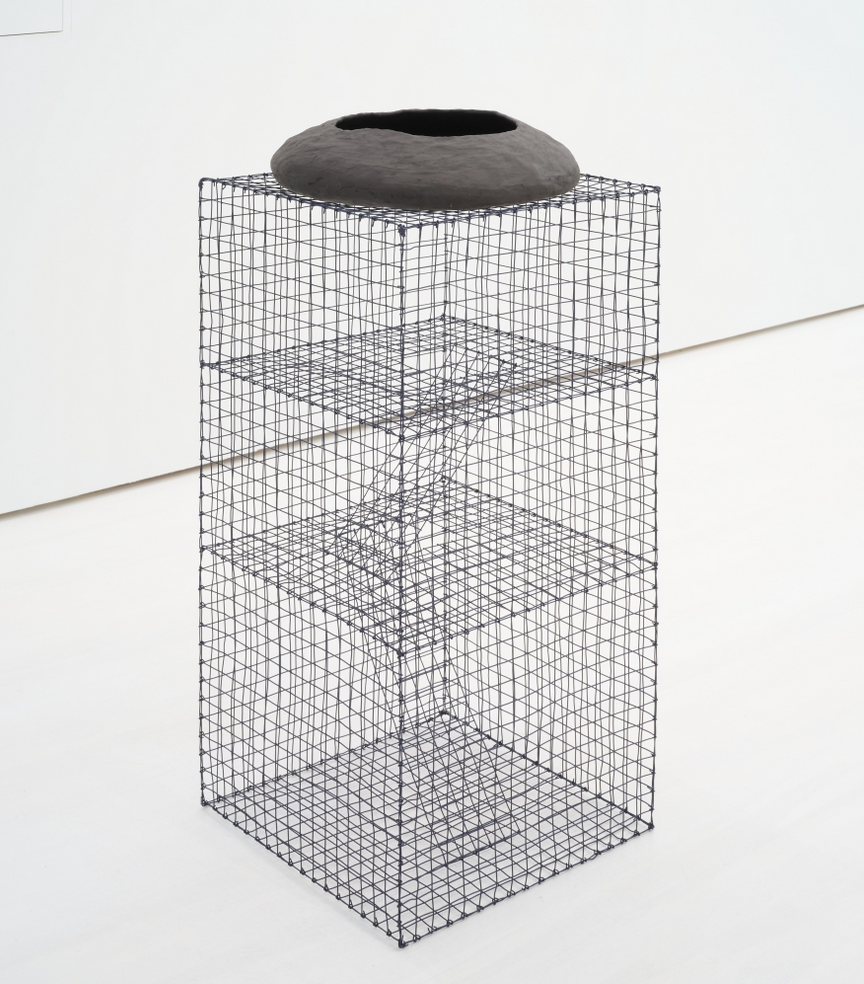
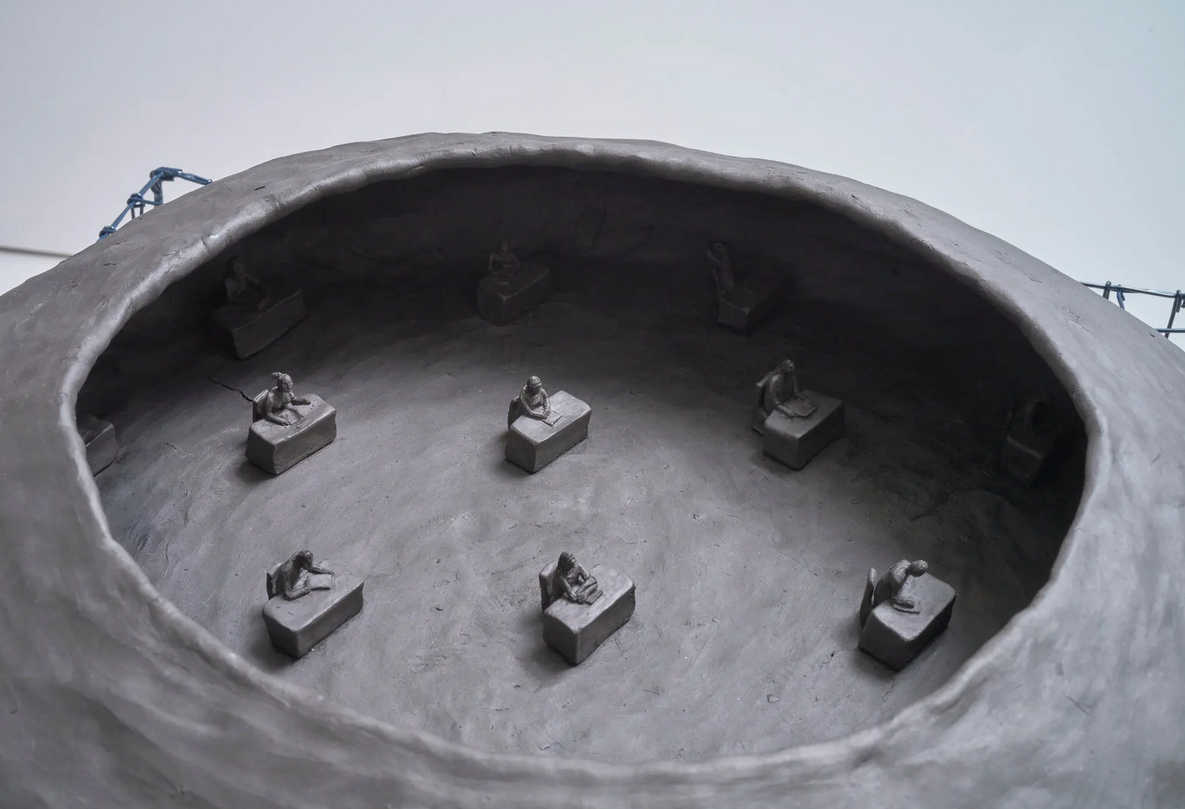
2021
Ceramic and powdered wire pedestal
Dream-like, as if invisibly hovering above the scenery, their perspective complements the fantastical scales of hidden worlds, secretly tucked away from plain sight. Without a direct connection at first glance – a couple embraced in bed or sheep grazing in the field, solitary or among others in the office – the sentiment that seems to enclose each figure and placement in their surroundings is that of quiet solitude. A solitude that peacefully pervades the mind, drifting and reaching spheres of its own making.
Like thought bubbles, each vessel, each scenery, seems like the dream of another, a myse-en-abyme of thoughts. The vignettes aren’t specific narratives but rather depict the invisible passing of time. Routine, monotony, and boredom fill up the space in between the precisely placed office desks, while people at the beach doze off into daydreams and an empty dwelling holds the memories of times past and a waiting pet. Enveloped in their own thoughts, their isolation seems both burden and chance. In light of the circumstances of the last two years, Jaeger’s sculptures remind us that the mind is capable of creating its own gateways, holes, and caverns of imagination.
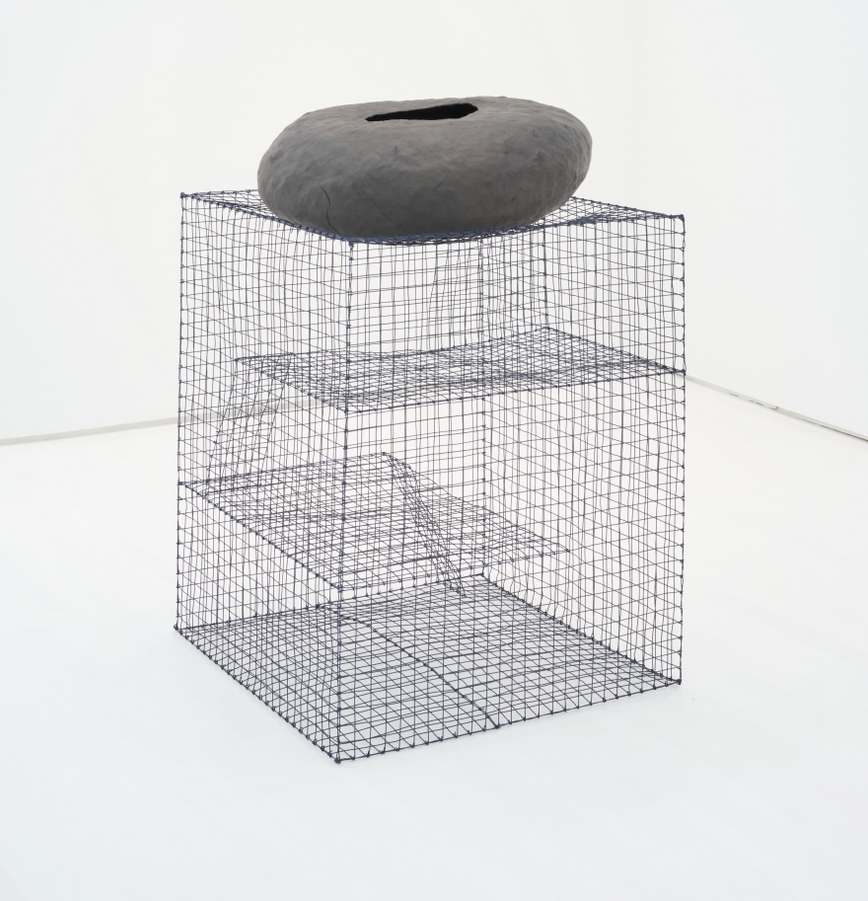

2021
Ceramic and powdered wire pedestal
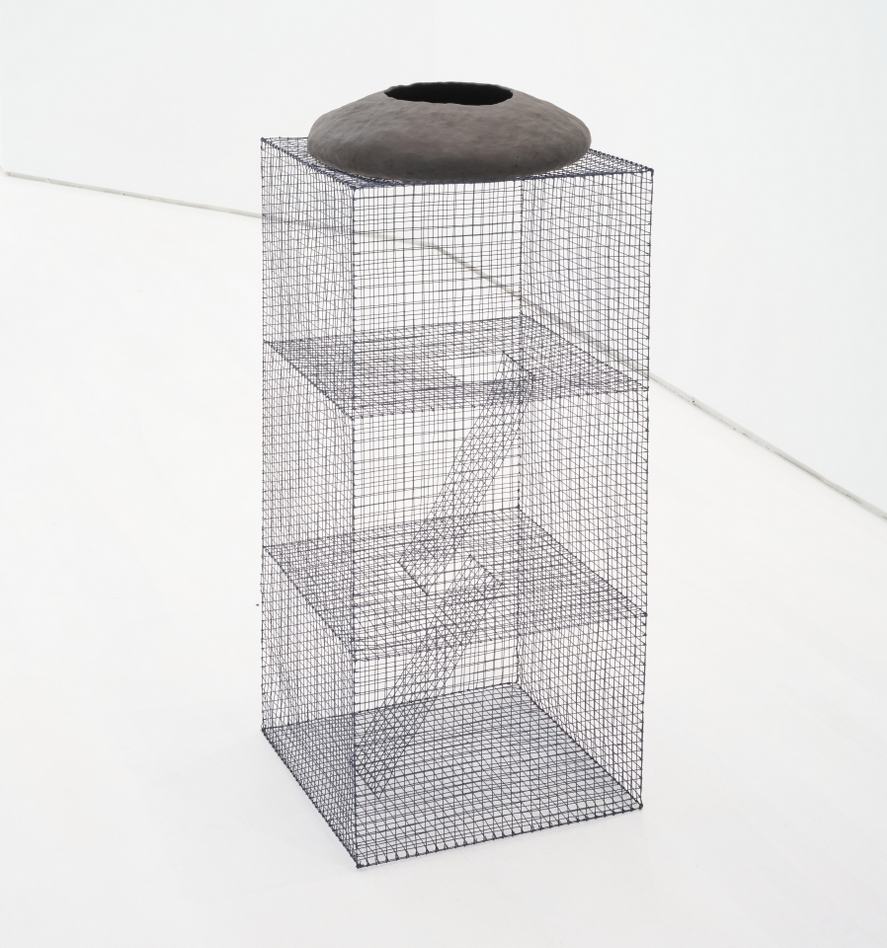
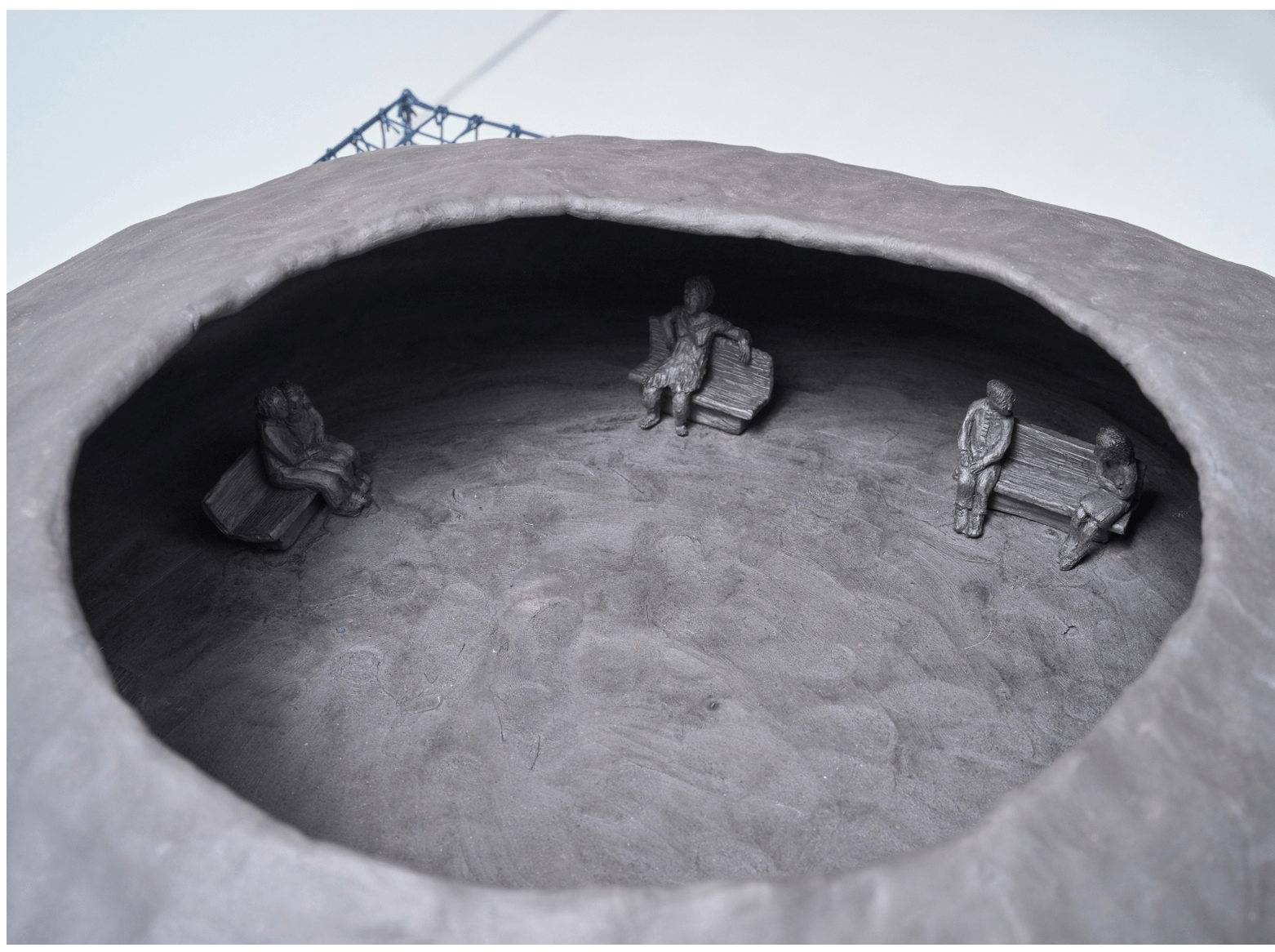
2021
Ceramic and powdered wire pedestal


2021
Ceramic and powdered wire pedestal
Writing in the ArtGuide, Lisa Yin Zhang states that regularity and monotony are also a dominant theme in the work:
“… not least in the gridded structures that dot the room. In one vessel, a figure sits fully awake, its arms wrapped around its legs, in a dormitory or shelter filled with sleeping figures as if freshly wrung from a nightmare. In another, figures are arrayed in identical desks and chairs. Indeed, whether these structures enclose a sense of safety, solitude or loneliness varies—see, for instance, the sad scene held within a skinny structure that few would deign to trek. Along with the mottled quality of these fired scenes—as if they are half-dreamt, not fully made—they suggest a metaphor for the human body or mind: the warrens we make for ourselves in our own unknowable interiorities.

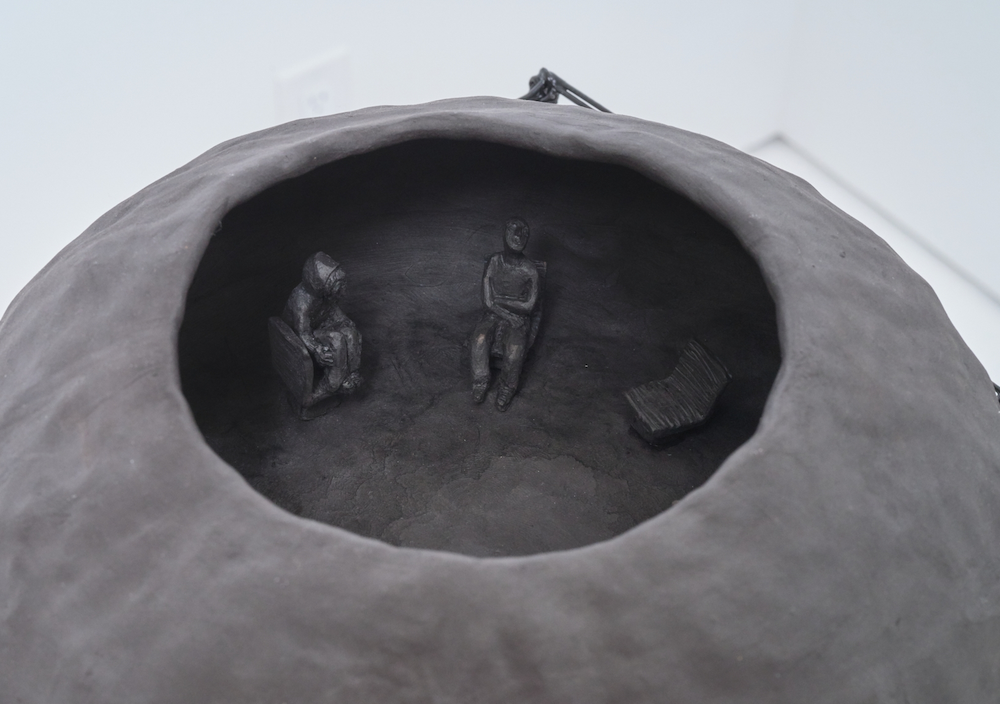
2021
Ceramic and powdered wire pedestal
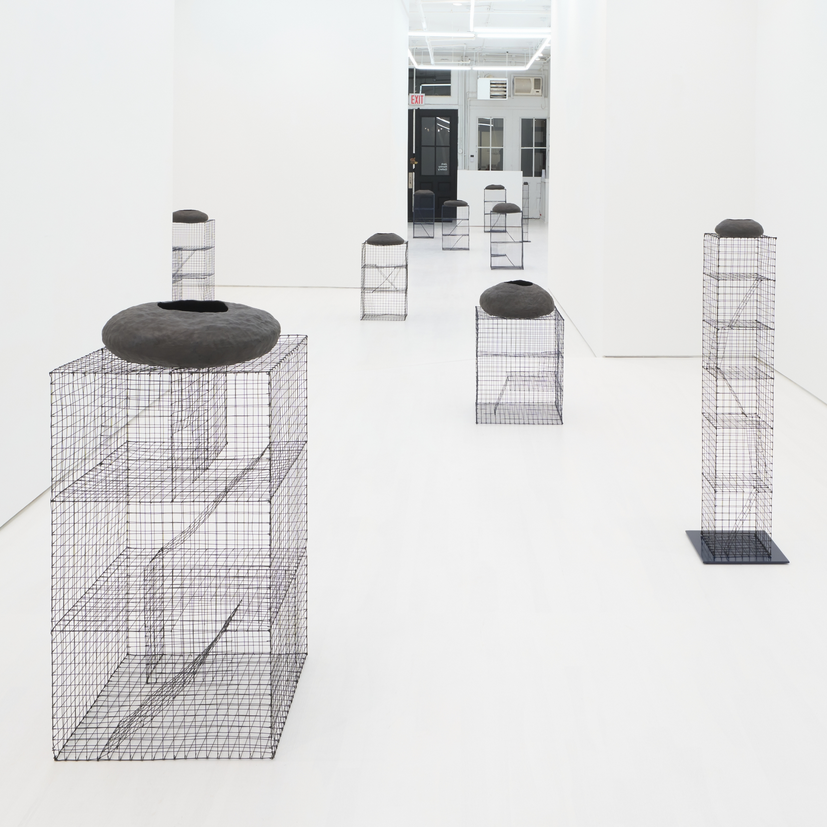
Add your valued opinion to this post.